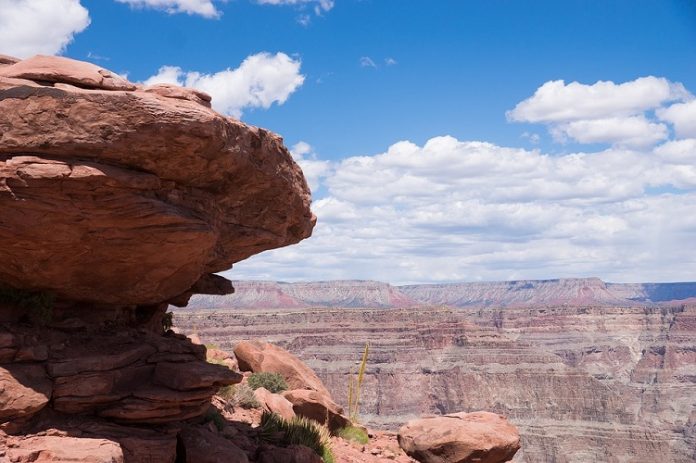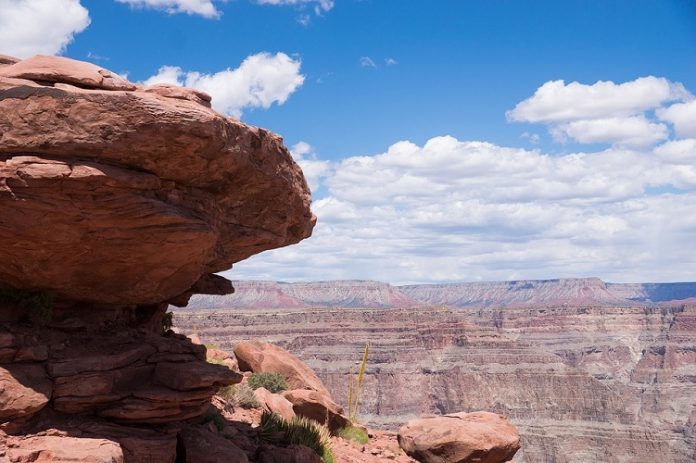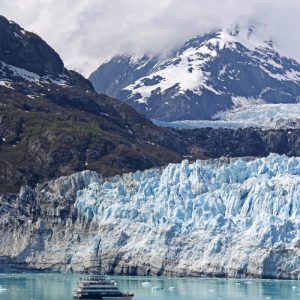
Online sources report that last year over 327 million travelers visited America’s national parks and historic sites. The majority of the crowds were found in Zion, Yellowstone, and the Great Smoky Mountains. If you want to avoid these crowds, here are 10 alternatives to America’s most visited national parks.
Contents
- 1. Grand Staircase-Escalante National Monument Instead of Zion National Park
- 2. Lassen Volcanic National Park Instead of Yosemite National Park
- 3. Wind River Mountain Range Instead of Yellowstone National Park
- 4. Kootenay National Park Instead of Rocky Mountain National Park
- 5. Grand Canyon West or Parashant National Monument Instead of Grand Canyon National Park
- 6. The Porcupine Mountains Wilderness State Park Instead of Great Smoky Mountains National Park
- 7. North Cascades National Park Instead of Glacier National Park
- 8. Mojave National Preserve Instead of Joshua Tree National Park
- 9. Voyageurs National Park Instead of Acadia National Park
- 10. Lake Clark National Park Instead of the Grand Teton National Park
1. Grand Staircase-Escalante National Monument Instead of Zion National Park

Zion National Park is almost a rite of passage for 4.5 million backpackers and hikers. The struggle against trashed and congested trails, especially in The popular Narrows, is never-ending. Less than 50 miles east of Zion is a striking desert landscape of gravity-defying rock formations and fiery sandstones. It’s the Grand Staircase-Escalante National Monument and is found on the border of Arizona and Utah. This place attracts under 25 percent of the travelers Zion draws and includes an area nearly seven times the size.
2. Lassen Volcanic National Park Instead of Yosemite National Park
 100vw, 696px” data-lazy-src=”https://acovalue.info/wp-content/uploads/2023/10/2-2-696×463-1.jpg” /><img decoding=)
Both of these parks are close to California’s popular San Francisco Bay Area. Both feature meadowlands, lakes. and granite mountains formed by lava. Luckily for those who dislike crowds, not even most Californians can locate Lassen Volcanic National Park.
While Yosemite draws in almost 4.5 million people yearly, Lassen levels off at less than 517,000 visitors annually. Here you can see Lassen Peak, the world’s largest plug dome volcano. You’ll meet fewer folks as you hike the popular three-mile round-trip Bumpass Hell hike too.
3. Wind River Mountain Range Instead of Yellowstone National Park

If you want to avoid the traffic and wildlife jams, dipstick tourists taunting the 2,000-pound bison and trespassing on Old Faithful, visit the Wind River Mountain Range. Yellowstone is a bucket-lister, but if you want to ditch the 4 million-plus visitors, Wind River Mountain Range is Wyoming’s official largest mountain range, featuring 40 named peaks, seven glaciers, 2,300 lakes and the rushing headwaters of the Green River. Additionally, it encompasses two national forests and parts of the Wind River Indian Reservation too.
4. Kootenay National Park Instead of Rocky Mountain National Park
 100vw, 666px” data-lazy-src=”https://acovalue.info/wp-content/uploads/2023/10/4-1-3.jpg” /><img decoding=)
Stunning Rocky Mountain National Park hosts almost 4.7 million visitors annually. This 415-square-mile park is beautiful. Some say, however, that overcrowded, busy campgrounds and packed trails are too noisy for a true wilderness experience.
Ah, but right across the border between Idaho and British Columbia is a less-traveled version of the Rockies at Kootenay National Park. The landscape and resident wildlife are much like that of Rocky Mountain. The difference is that Kootenay draws less than 515,000 visitors annually and it is serene and peaceful.
5. Grand Canyon West or Parashant National Monument Instead of Grand Canyon National Park

In 2018 the Grand Canyon National Park racked up nearly 5.9 million visitors. If you’d like to avoid the crowds but still see this natural wonder in Arizona, you do have options. There’s the Hualapai tribe opened Grand Canyon West, complete with a 4,000-foot-high glass skywalk, a zipline, boat tours and river rafting along the Colorado River. There’s also the more secluded Parashant National Monument. Although it’s perched on the canyon’s edge it hosts less than 18,000 visitors yearly.
6. The Porcupine Mountains Wilderness State Park Instead of Great Smoky Mountains National Park

The Great Smoky Mountains National Park hosted 12.5 travelers last year. That’s as many visitors as Glacier, Zion, and Rock Mountain National Parks combined. The park is beautiful but if you are seeking solitude and serenity you might want to look elsewhere.
Try the Porcupine Mountain Wilderness in the upper peninsula of Michigan. Like the Great Smoky Mountains, it has rushing waterfalls, old forests, and incredible views. The “Porkies” get only 2.5 percent of the total visiting the Smokies.
7. North Cascades National Park Instead of Glacier National Park
 100vw, 696px” data-lazy-src=”https://acovalue.info/wp-content/uploads/2023/10/7wiki-696×458-1.jpg” /><img decoding=)
Some travel writers claim Glacier National Park’s future could be impacted by “the climate crisis.” There’s also some concern that the 3 million annual glacier-hunting visitors might also be affecting the place’s “ecological stability.”
Fret not. This park isn’t the only place on the continent you can find frozen tundra. Witness Washington’s North Cascades National Park. Here west along the rugged U.S.-Canadian border, you’ll find glaciers, peaks, and turquoise lakes. If you’re able, hike the hardy 7.5-mile round-trip Cascade Pass Trail too.
8. Mojave National Preserve Instead of Joshua Tree National Park

Those in the know claim that ever since Joshua Tree was deemed “the hip desert hangout” for defecting Los Angelinos, almost 3 million people visit this Joshua tree-filled park. The damage done there in 2018 alone might take over two centuries to heal.
Choosing to visit the Mojave National Preserve instead is now considered to be a genuine act of benevolence. This 1.6 million-acre park is just down the road. It not only includes the largest Joshua tree forest in the world but offers more solitude as is visited by less than 840,000 travelers annually.
9. Voyageurs National Park Instead of Acadia National Park
 100vw, 696px” data-lazy-src=”https://acovalue.info/wp-content/uploads/2023/10/9-2-696×464-2.jpg” /><img decoding=)
Acadia National Park had so much gridlock a couple of years ago the only road to one of its most reportedly popular peaks was closed no less than 49 times due to safety concerns. Additionally, bloggers add that parking there in the summer has now become “its own special kind of hell.”
If you’d rather not compete with the nearly 3.4 million visitors there, see the comparative coastal beauty of Voyageurs National Park. It features rugged lakeshores, wildlife and is perfect for canoeing and kayaking.
10. Lake Clark National Park Instead of the Grand Teton National Park
 100vw, 696px” data-lazy-src=”https://acovalue.info/wp-content/uploads/2023/10/10-1-696×346-1.jpg” /><img decoding=)
Grand Teton National Park hosted nearly 3.4 million tourists last year. While it’s one of the most iconic landscapes in the US, experts say it deserves a break from “the destructive love” of its visitors. Luckily, when it comes to national parks, Lake Clark National Park is said to be “Grand Teton on steroids.” Ensconced in southern Alaska, it is both remote and awe-inspiring. Indeed, it’s accessible only by plane or boat and features Crayola-colored lakes, pristine ocean shores, and craggy peaks.



